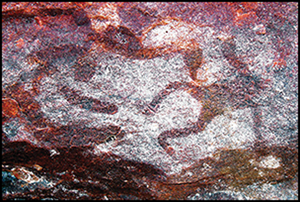Crossref Citations
This article has been cited by the following publications. This list is generated based on data provided by
Crossref.
Taçon, Paul S.C.
May, Sally K.
Lamilami, Ronald
McKeague, Fiona
Johnston, Iain G.
Jalandoni, Andrea
Wesley, Daryl
Sanz, Ines Domingo
Brady, Liam M.
Wright, Duncan
and
Goldhahn, Joakim
2020.
Maliwawa figures—a previously undescribed Arnhem Land rock art style.
Australian Archaeology,
Vol. 86,
Issue. 3,
p.
208.
May, Sally K.
and
Goldhahn, Joakim
2021.
Encyclopedia of Global Archaeology.
p.
1.
McCarthy, John
Wiseman, Chelsea
Woo, Katherine
Steinberg, David
O’Leary, Michael
Wesley, Daryl
Brady, Liam M.
Ulm, Sean
and
Benjamin, Jonathan
2022.
Beneath the Top End: A regional assessment of submerged archaeological potential in the Northern Territory, Australia.
Australian Archaeology,
Vol. 88,
Issue. 1,
p.
65.
Ash, Jeremy
Bradley, John J.
Mialanes, Jerome
Brady, Liam M.
Evans, Shaun
Barrett, David
David, Bruno
Wesley, Daryl
Dotte-Sarout, Emilie
Rowe, Cassandra
Urwin, Chris
and
Manne, Tiina
2022.
Marra philosophies of stone, and the stone artefacts of Walanjiwurru 1 rockshelter, Marra Country, northern Australia.
Journal of Anthropological Archaeology,
Vol. 68,
Issue. ,
p.
101456.
Brady, Liam M.
Wesley, Daryl
Bradley, John
Kearney, Amanda
Evans, Shaun
and
Barrett, David
2022.
‘Contact’ Rock Art and the Hybrid Economy Model: Interpreting Introduced Subject Matter from Marra Country, Southwest Gulf of Carpentaria, Northern Australia.
Cambridge Archaeological Journal,
Vol. 32,
Issue. 4,
p.
527.
Rowe, Cassandra
Ash, Jeremy
Brady, Liam M.
Wesley, Daryl
Evans, Shaun
and
Barrett, David
2023.
Exploring palaeoecology in the Northern Territory: the Walanjiwurru rockshelter, vegetation dynamics and shifting social landscapes in Marra Country.
Vegetation History and Archaeobotany,
Vol. 32,
Issue. 4,
p.
405.
Walsh, Matthew
Dotte-Sarout, Emilie
Brady, Liam M.
Bradley, John
Ash, Jeremy
Wesley, Daryl
Evans, Shaun
and
Barrett, David
2024.
Collaborative anthracology and cultural understandings of wood charcoal in Marra Country (northern Australia).
Archaeological and Anthropological Sciences,
Vol. 16,
Issue. 9,
Davidson, Iain
2025.
Art or Scribbles? In the Eye of the Beholder: The Evolutionary Emergence of Visual Communication.
Vol. 11,
Issue. ,
p.
337.


